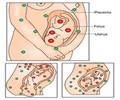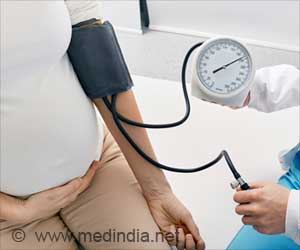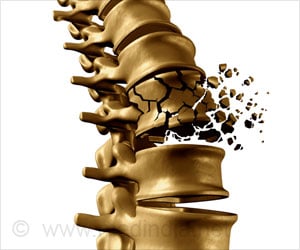Twice as many women at risk for future cardiovascular or renal disease when accounting for hypertensive disorder per-woman vs. per-pregnancy, revealed new study.

‘Hypertensive disorders of pregnancy (HDP) include four categories: preeclampsia, gestational hypertension, chronic hypertension and superimposed preeclampsia (women with chronic hypertension who develop preeclampsia). Women who have preeclampsia during pregnancy are at risk for death from heart disease as early as the first decade after giving birth.’





The researchers used the Rochester Epidemiology Project, a medical record system of all providers in Olmsted County, Minnesota, to compare the risk of heart and kidney disease in pregnant women with and without a history of HDP who delivered (liveborn or stillborn) between 1976 and 1982. The researchers identified 9,862 pregnancies among 7,544 women living in Olmsted County during the assessment period. Each medical chart was screened to determine which women had possible HDP, where a positive screen was defined as two elevated blood pressures taken at any prenatal visit, during delivery or postnatal before hospital discharge. During the six-year assessment period, 659 women had a total of 719 HDP pregnancies, an incidence rate per-pregnancy of 7.3% for HDP and 3.3% for preeclampsia. To assess HDP incidence rate per-woman, the researchers identified 1,839 women who had sufficient information for all of their pregnancies. The per-woman HDP incidence was twice that of the per-pregnancy rate, at 15.3% (n=281) and 7.5% (n=138) for HDP and preeclampsia, respectively. Women younger than 20 years of age and women older than 35 years of age had the highest incidence rates of preeclampsia and gestational hypertension.
Across a follow-up period of 36.2 years, 571 women with history of HDP developed a chronic condition, including (but not limited to) cardiac arrhythmias, coronary artery disease, heart failure, stroke, chronic kidney disease and hypertension, suggesting that 1 in 6 women may be at an increased risk for heart or kidney disease. Women with HDP developed a chronic condition at an accelerated rate and at earlier age compared with their counterparts.
This study has several limitations, including the lack of diversity in the study population (predominantly white) and looking at a population from four decades ago. A more ethnically diverse contemporary cohort should be pursued. The researchers stress the need for lifestyle interventions and preventive care in this high-risk population.
"With this study, Garovic and colleagues advance our understanding of the burden of HDP-associated multimorbidity," said Michael C. Honigberg, MD, MPP, research fellow in the department of medicine at Massachusetts General Hospital, in an accompanying editorial comment. "The authors have shown that the total HDP burden expressed as incidence per-woman is considerably higher than per-pregnancy. The discovery of effective-targeted risk-reducing interventions for women with HDP would make pregnancy an even more actionable and powerful screening test."
Advertisements















